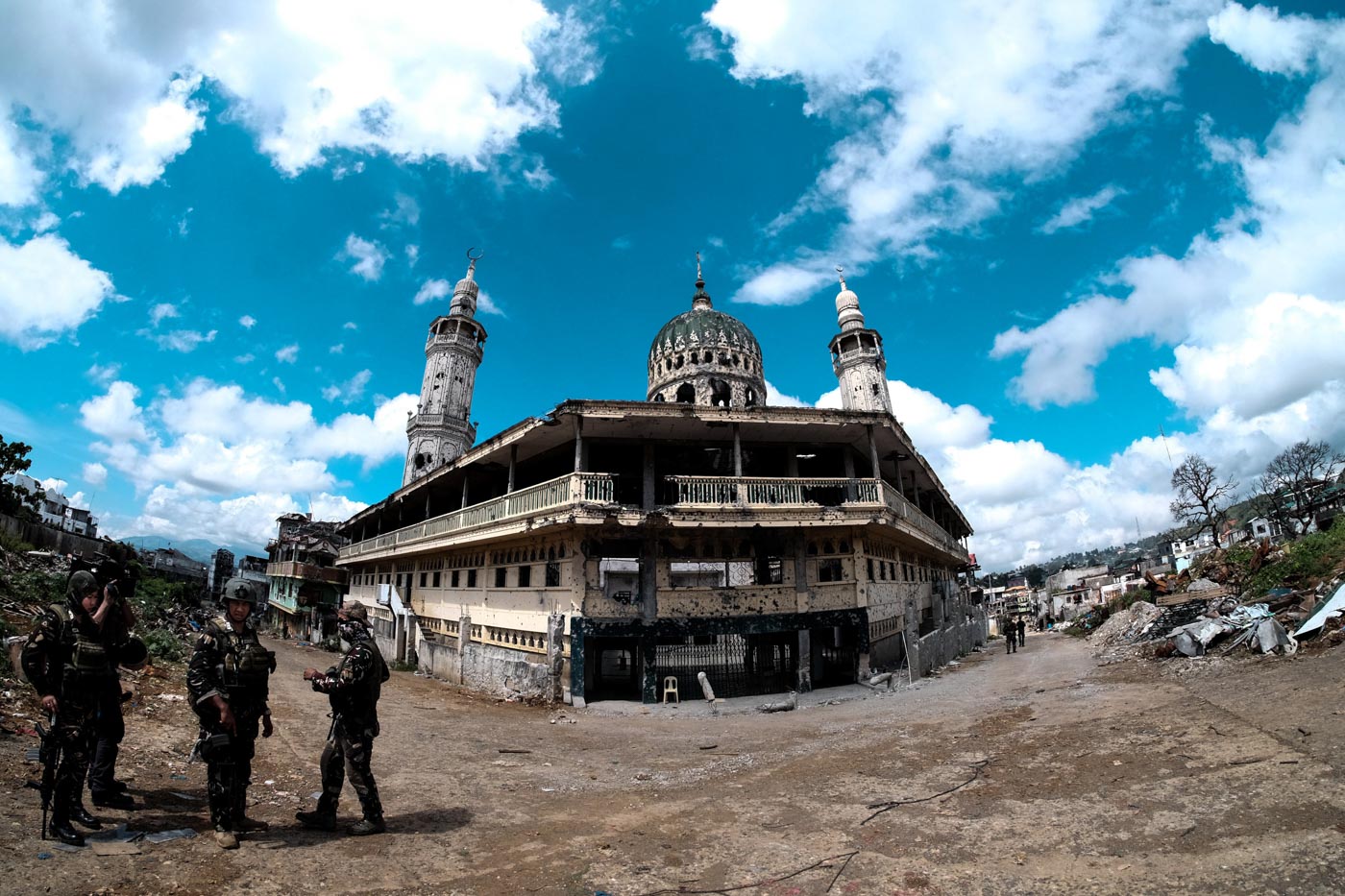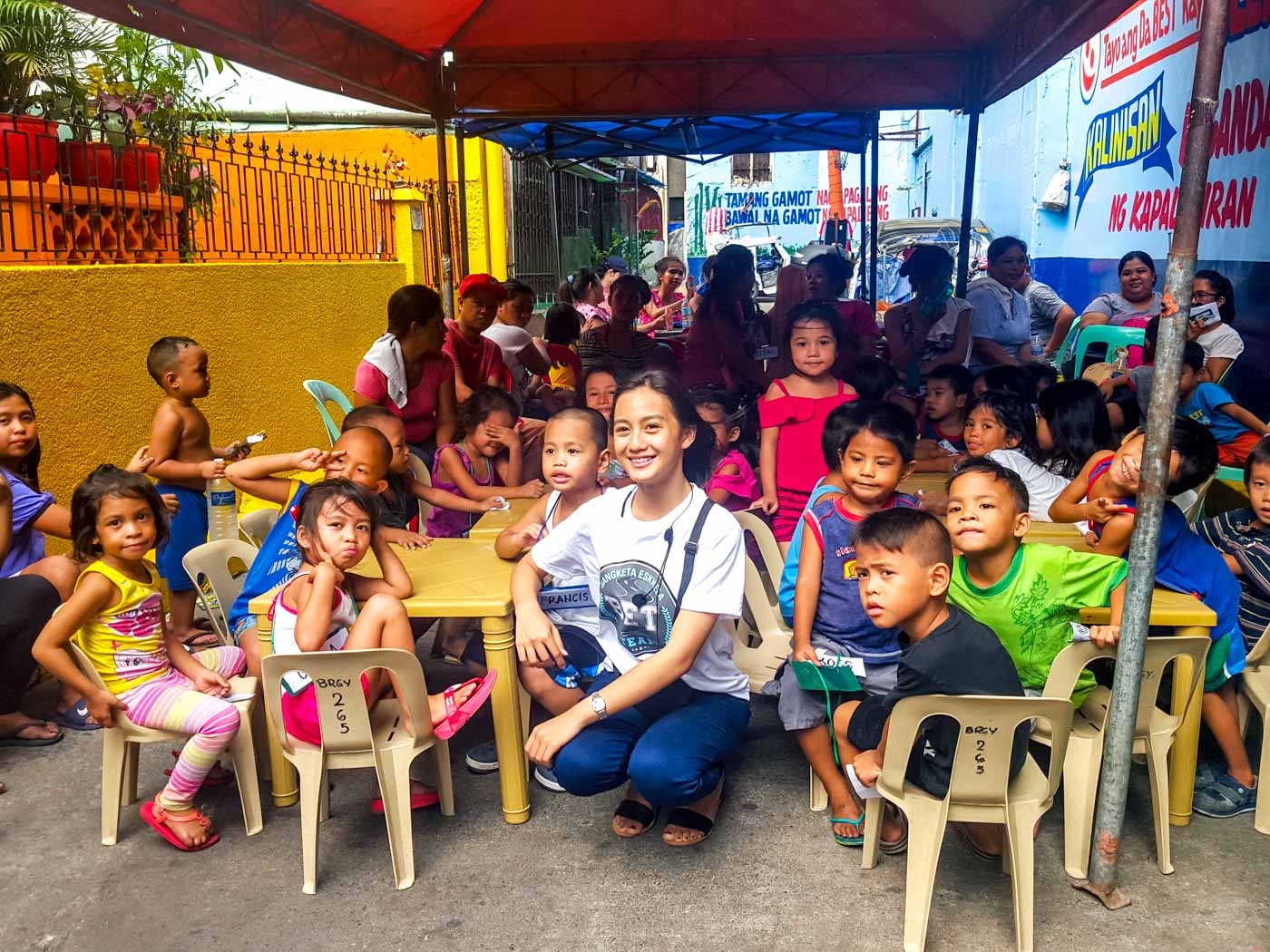NEGROS ORIENTAL, Philippines – Whenever Pablito Baguio hears loud rain, he begins packing up.
He first grabs for the plastic-sealed chips he sells at the ground floor of his two-story home, then, when it pours louder, he works his way up to the second floor, where he keeps his clothes, gadgets, and cash savings.
Once the loading is done, he sets off, walking around 100 meters toward a hypermart, which allows him refuge. When the water flows back to the river, he returns to his home, left dirtied with debris from the downpour.
He cleans up, waits for the floors to dry, then unpacks his baggage. Overnight, he is back at selling snacks, bracing for the next torrent to come.
Baguio is just one of hundreds who live by the riverside in Dumaguete, a city in southern Philippines. They have adopted this routine of dispersing to their own safe places when the water rises, and returning when it subsides.
But where will they go if a storm comes and the water rises to their safe places, too? How will help reach them if they get lost? Baguio admits he does not know.
“Basta kung saan mataas at p'wedeng silungan,” he says. (Wherever there's higher ground and where we can take shelter.)
But where is wherever? He does not know.
Mapping the city
![LOCAL. Pablito Baguio faces floods when it rains intensely. Photo by Rambo Talabong/Rappler]()
To give exact answers on where residents can flee and where help could meet them, the city’s Disaster and Risk Reduction Management Office (DRRMO) is looking at mapping the entire city online, pinning down the best places people could go to when the unexpected comes, and where responders are ready to accept distress calls from those who are lost.
“Right now we are geotagging the different vital government installations as well as the location of the different evacuation centers,” the DRRMO’s chief, Rizal Binatiro, told Rappler.
The map, based on the Ushahidi application, is accessible through a web browser in any desktop computer and in an application for mobile phones.
Ideally, the application would work like this: the local government has an access to an online map of Dumaguete projected live. The spread will contain pins that point to critical locations, such as evacuation centers and landmarks, during disasters.
When disaster comes – a flood for example – lost residents can send reports through their phones where they need help, and authorities can easily find them.
![DRRMO CHIEF. Rizal Binatiro at his office. Photo by Rambo Talabong/Rappler]()
Residents can send a report either through the application or even through SMS. With residents turning on location services on their devices, the government can spot their approximate location and send help in a matter of minutes.
With institutions and landmarks pinned in advance, the government can locate people faster.
The DRRMO is developing the application with veteran crisis mapper Kirk Morris, an American who has worked with international relief organizations for years before settling in Dumaguete.
Morris said the map aims to end the practice of sending help to places like “beside this or that tree,” or “near the school by the left.”
Any disaster responders from the local military to International humanitarian organizations who are not familiar with the terrain would find the map essential, Morris said, as exact coordinates of where help is needed can simply be relayed to them.
“This will shorten the time for disaster response considerably,” Morris said.
And for most, if not all, disasters, arriving even just a few seconds late could mean lives.
Dumaguete’s geography
Dumaguete City, its chief planner Leony Caro described, is a “catchment area” when it rains. Many locals simply describe their city as “bagsakan ng tubig” (where the water gathers).
This is because Dumaguete is a lowland area, just like many coastal towns. A neighboring municipality, Valencia, meanwhile, enjoys high elevation.
When it rains, the water from Valencia rolls straight down to Dumaguete through the two rivers that bond them. Riverside resident Baguio lives along the banks of Banica River.
In the east, meanwhile, Dumaguete faces the Tanon Strait, which has restless waves on windy nights.
“Napagitnaan tayo (We are surrounded). And with that…especially with heavy rains, we have problems of flooding and typhoon,” Binatiro lamented.
The waters breach the shore during strong downpours and storms. Because of this, 9 of its 30 barangays are considered vulnerable to storm surges.
But while vulnerable to flash floods, Caro said, Dumaguete’s land makes up for it by being an “almost flat city,” making mobility, and also geotagging, easier.
“So, you have no problem regarding vehicle, and if you want to geotag structures or areas within the poblacion (town center) area, you can just walk around. It's easy,” Caro added.
Innovating after a data drought
![VOLUNTEER. Kirk Morris is a veteran disaster mapper helping out the Dumaguete City disaster risk reduction and management office. Photo by Rambo Talabong/Rappler]()
Despite the connotation of development in being called a “city,” Dumaguete considers geotagging already a big leap.
Binatiro has only assumed office in January 2018, coming from the DRRMO of Daanbantayan town in Cebu. When he did an audit of the office, he was surprised to see that the office had not been able to collect crucial data.
“To be quite frank, we do not have data previously. They were just relying on responding, actual response, but walang nakaback-up na data (there was no backed-up data),” Binatiro said.
The city holds the instruments to gather data like rain gauges to approximate how strong rains need to be before floods, Binatiro said, but it had not been able to put on record what the contraptions measured over the years.
This leaves residents like Baguio living in flood-prone areas still rely on gut feel if a rain would lead to a flood, and the local government waiting for advisories from national agencies before they could issue their own announcements.
With the geotagging, the DRRMO can gather an array of data sets that relate to disasters.
For example, they can see which districts are problem areas for fires just based on frequent reports of blazes immediately stored online.
They don’t need to go through the sluggish bureaucratic procedure of collating. Residents can be their primary source of information.
The crucial role for Dumagueteños
![STARTING YOUNG. Dumaguete reaches out to high school students in teaching the value of disaster preparedness. Photo from Dumaguete DRRMO]()
But while the technology sounds promising, Binatiro said they couldn’t be the only ones using it. They would need the community’s participation.
“We need the help of the community for this. It can’t just be us, the government,” Binatiro said.
To help and ask for help when disaster comes, responders and residents only need mobile phones with load— something that most Filipinos already have.
“Grandma has her text phone and grandpa has his text phone and it seems to me nearly every student has a smartphone,” Morris observed in his years living in the Philippines.
The DRRMO has also been campaigning hard to get Dumagueteños to appreciate the value of disaster preparedness, beginning with students.
They are backed by non-governmental organizations that have organized a fun run, which encourages citizen participation for environmental sustainability.
While residents have not been responsive as they had wanted, Binatiro and Morris are optimistic that locals will see the value of innovating to prevent casualties.
"The challenge is really to introduce the concept and teach them, inform them, and I believe they would be able to embrace the whole thing," Binatiro said.
Now, they are looking at convincing the rest of the Dumaguete local government to back their project so that the DRRMO does not stand alone.
![LOCAL CHIEF. Felipe Remollo says he supports innovation to prepare the city for disasters. Photo by Rambo Talabong/Rappler]()
Speaking to Rappler, Dumaguete City Mayor Felipe Remolio said he is open to Binatiro and Morris’ proposal, adding that the city is prepared to spend just to get service providers in mapping the city.
“It’s always beneficial to employ modern technology to make it easier for us to prevent the ill effects of climate change, that is why we are open to receiving proposals from locators service providers for this no matter how expensive. We have enough, I think, we can save money for this purpose,” Remollo said.
According to Binatiro and Caro, Mayor Remollo is a boss known for encouraging innovation for the development of Dumaguete.
With this, Binatiro holds high hopes that geotagging will be supported by the local government, and if appreciated by the city’s residents, even save lives.
“It will empower them to save themselves. They do not need to ask for help for someone to reach the government. All you have to do is just get into your cellphones, type in whatever help you need, or whatever assistance you need from the government, then the government can now deliver the goods that you really want or really need in the area,” Binatiro said.
Still, they are preparing the application before it would be presented to the city council, moving at a pace of one potentially life-saving pin at a time. – Rappler.com
Dumaguete City will be the venue of the 2018 Freedom Run organized by the Friedrich Naumann Foundation for Freedom. Click the image below for details on how to take part in this event.
![]()
![]()




































